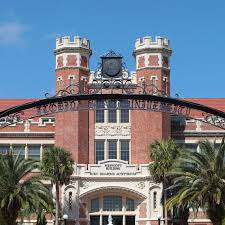Speaker
Description
The future Electron-Ion Collider (EIC) in the US – with experimental operations starting in the early 2030s – is poised to be the machine in high-energy nuclear physics to answer longstanding question in hadronic physics. It will be capable of operating at luminosities up to $10^{34}$ cm$^{-2}$s$^{-1}$, and be the only machine able to collide polarized electron and polarized light / nuclear beams up to the highest A. A major component of the EIC physics program is the detection of diffractive final states which can produce particles very close to the beam ($\theta$ < 35 mrad) – the so-called “far-forward” region of the EIC interaction region. Measurement of these diffractive final states requires use of multiple detector sub-systems integrated into the hadron beamline, which provides a challenge for integration with the accelerator magnets and vacuum system. Additionally, the exclusive and diffractive final states measured in the far-forward region can also leverage different machine optics configurations, which provide a tradeoff between detector acceptance and luminosity, and allow for optimal conditions for tagging final state particles in different regions of the far-forward phase space. In addition to the far-forward region, there is also instrumentation integrated in the far-backward (electron-going) region used for tagging events with $Q^{2}$ < 1 GeV$^{2}$, and for monitoring the luminosity. In this talk, I will discuss these far-forward and far-backward detector subsystems in detail, and discuss the various challenges faced in integrating these detectors with the EIC machine.
| speaker affiliation | Brookhaven National Laboratory |
|---|

